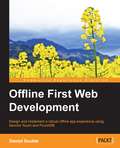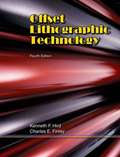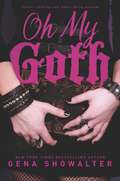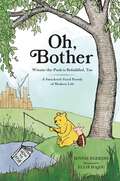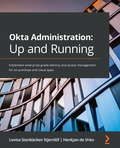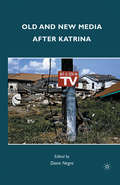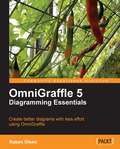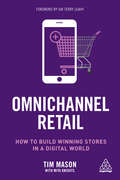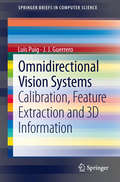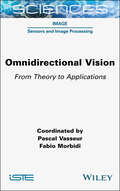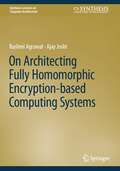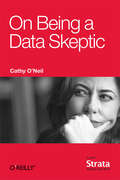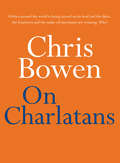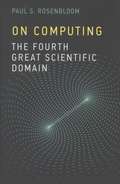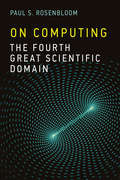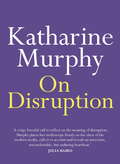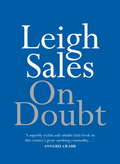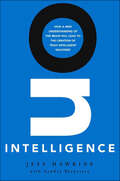- Table View
- List View
Offline First Web Development
by Daniel SaubleDesign and implement a robust offline app experience using Sencha Touch and PouchDB About This Book * Understand the design principles behind a well-designed offline experience * Create the illusion of being online when you're really offline * Use common libraries to enhance the offline experience of mobile apps with this comprehensive guide Who This Book Is For Do you want to make your app experience more robust and delightful? Are you eager to write apps that cater to a wider audience, not just the Silicon Valley crowd? Do you need to persuade your peers that offline-first is a worthwhile development paradigm? If your answer to all or any one of these questions is yes, then this is the book is for you. Some previous coding and command-line experience would be useful, but is not required. What You Will Learn * Convince others that the offline-first paradigm is worth doing * Design the behavior of the app, taking offline, online, and the transition between those two states into account * Implement the offline/online experience that you've designed * Show the user what's happening under the hood with online/offline indicators and Good Mobile Messaging * Employ various strategies to cope with unreliable network conditions * Help the user resolve conflicts related to the "split-brain" problem * Choose intelligent defaults based on usage of the app * Use point-to-point networking to partially overcome a lack of Internet connectivity In Detail When building mobile apps, it's easy to forget about the moments when your users lack a good Internet connection. Try this: put your phone in airplane mode and open a few popular apps to see how they handle being offline. From Twitter to Pinterest to Apple Maps, some apps handle being offline better than others, but very few do it well. A poor offline experience will result in frustrated users who may stop using your app, or worse, turn to your competitor's apps. Expert or novice, this book will teach you everything you need to know about designing and building a rigorous offline app experience. By putting the offline experience first, you'll have a solid foundation to build upon, avoiding the unnecessary stress and frustration of trying to retrofit offline capabilities into your finished app. This basic principle, designing for the worst case scenario, could save you countless hours of wasted effort. Style and approach This book adopts an iterative approach to designing and building a mobile app, where each chapter builds on the one before, resulting in a fully-functional app that demonstrates the concepts taught, each one of which is explained through the use of an example.
Offline!: Der Kollaps der globalen digitalen Zivilisation
by Thomas GrüterIn der Geschichte der Menschheit entstanden und vergingen mehr als 50 Hochkulturen und Zivilisationen. Auffällig dabei: Die meisten zerfielen in nur wenigen Jahrzehnten – unmittelbar nach dem Gipfelpunkt ihrer Macht und ihres Reichtums. Kann uns das auch passieren?Heute, zu Beginn des 21. Jahrhunderts, dominiert nur eine einzige Lebensweise: die globale digitale Zivilisation. Ohne Smartphones, Computer, GPS und Suchmaschinen geht nichts mehr. Nirgendwo. Und noch immer ist der Fortschritt rasant. Hat unsere Zivilisation vielleicht schon bald ihren Höhepunkt erreicht? Das Buch trägt beunruhigende Indizien dafür zusammen – und trifft damit den Nerv der Zeit. In Europa glaubt schon heute eine Mehrheit der Menschen, dass es ihren Kindern schlechter gehen wird als ihnen.Thomas Grüter vertritt die These, dass nicht Pandemien, Supervulkane oder Sonnenstürme die größten Risiken der Menschheit sind. Vielmehr droht das komplexe Grundgerüst unsere Zivilisation seine Stabilität zu verlieren. Selbst ohne die Belastung durch Klimawandel und Bodendegradation könnte es von innen her zerfallen. In zehn Kapiteln untersucht das Buch die Risiken der modernen Informationsgesellschaft, z.B:· Wie anfällig sind die Infrastrukturen und speziell die digitale Infrastruktur?· Wie stabil ist das gespeicherte Wissen? Können medizinische und naturwissenschaftliche Erkenntnisse überhaupt wieder verloren gehen?· Muss eine Wirtschaft, die auf ständiges Wachstum und globalen Handel angewiesen ist, irgendwann kollabieren? · Wann gehen uns die Rohstoffe aus, und ist das überhaupt absehbar? · Wie sicher sind Zukunftsvorsagen?· Welche Gefahr geht von Cyberkriegen aus? · Wie könnte die Gesellschaft nach dem Ende des Internets und der Smartphones aussehen?· Was lernen wir aus dem Zerfall früherer Zivilisationen?· Mit welchen Maßnahmen können wir einen plötzlichen Zerfall der digitalen Lebensweise abfedern oder vermeiden? Spannend geschrieben und umfassend recherchiert, gibt das Buch schlüssige Antworten auf die entscheidende Frage: Wie vermeiden wir die Fehler, an denen bisher alle Zivilisationen gescheitert sind? Das Buch legt die Sollbruchstellen der globalen digitalen Zivilisation offen und weist Wege aus der Krise. Wenn die Menschheit alle anstehenden Probleme meistert, dann steht ihr irgendwann der Weg zu den Sternen offen.
Offset Lithographic Technology (4th edition)
by Kenneth F. Hird Charles E. FinleyOffset Lithographic Technology provides extensive coverage of electronic applications in all areas of printing. This edition includes in-depth coverage of electronic text generation, computer-to-plate operations, computer-controlled inking and printing, digital image generation, and electronic prepress (desktop publishing). A math and measurement chapter helps students master these important basic skills.
Oh My Goth
by Gena ShowalterA note from Jade Leighton’s journalYears ago, a tragic accident robbed me of my mother and emotions. Because I find beauty in darkness and thrive outside social norms, I’ve been labeled a “freak” at school. I know my continued apathy hurts my loved ones, but I’m not about to change. Nothing will ever hurt me again.Then I wake up in an alternate reality…and everything else has changed. Goth is in. I’m considered cool, and my archenemy—the formerly popular Mercedes—is the freak. But my real friends won’t talk to me...and the new boy is getting under my skin. As my world spins out of control, I’m desperate to return to normal. But the more time that passes, the less I’m sure what “normal” really is.
Oh, Bother: Winnie-the-Pooh is Befuddled, Too (A Smackerel-Sized Parody of Modern Life)
by Jennie EgerdieWelcome back to the Hundred Acre Wood as Winnie-the-Pooh and friends acclimate to the joys and worries of the 21st century in this heartfelt parody. The world has changed in the hundred years since A. A. Milne introduced us to Winnie-the-Pooh and his pals, but that doesn&’t mean our lovable friends haven&’t adapted to life in the twenty-first century. In this heartwarming, laugh-out-loud parody, Jennie Egerdie, author of the celebrated Frog and Toad are Doing Their Best, takes us along for some marvelous misadventures as the gang grapples with modern life&’s headaches and pesky predicaments. Like the rest of us, Pooh worries about what the dwindling bee population will do to his beloved honey, while Owl discovers how far too easily misinformation can spread online. Kanga hopes she can have a night off from raising Roo, and Eeyore is finally taking care of his mental health with the help of Dr Festinker, the neighborhood therapist (and skunk). Things may not always make sense in our world, but Winnie-the-Pooh always bounds ahead, day by day and smackeral by smackeral.
Okta Administration: Implement enterprise-grade identity and access management for on-premises and cloud apps
by Lovisa Stenbacken Stjernlof HenkJan de VriesPlan, design, and implement identity and access management solutions with OktaKey FeaturesLearn how to use Okta for complete identity and access management in your organizationUse single sign-on, multifactor authentication, and life cycle management for enhanced securitySet up, manage, and audit API access policiesBook DescriptionIAM, short for identity and access management, is a set of policies and technologies for ensuring the security of an organization through careful role and access assignment for users and devices. With this book, you'll get up and running with Okta, an identity and access management (IAM) service that you can use for both employees and customers.Once you've understood how Okta can be used as an IAM platform, you'll learn about the Universal Directory, which covers how to integrate other directories and applications and set up groups and policies. As you make progress, the book explores Okta's single sign-on (SSO) feature and multifactor authentication (MFA) solutions. Finally, you will delve into API access management and discover how you can leverage Advanced Server Access for your cloud servers and Okta Access Gateway for your on-premises applications.By the end of this Okta book, you'll have learned how to implement Okta to enhance your organization's security and be able to use this book as a reference guide for the Okta certification exam.What you will learnUnderstand different types of users in Okta and how to place them in groupsSet up SSO and MFA rules to secure your IT environmentGet to grips with the basics of end-user functionality and customizationFind out how provisioning and synchronization with applications workExplore API management, Access Gateway, and Advanced Server AccessBecome well-versed in the terminology used by IAM professionalsWho this book is forIf you are an IT consultant, business decision-maker, system administrator, system and security engineer, or anyone who wishes to use Okta to plan, design, and implement identity and access management solutions, this book is for you. A basic understanding of authentication and authorization is necessary.
Old and New Media after Katrina
by Diane NegraOn the fifth anniversary of Hurricane Katrina, this book examines the television coverage of September, 2005, and the manifestation of its legacy in a range of other media forms.
Olympic-Caliber Cybersecurity: Lessons for Safeguarding the 2020 Games and Other Major Events
by Julia A. Thompson Cynthia Dion-Schwarz Nathan Ryan Erik Silfversten Giacomo Persi PaoliUnderstanding the cybersecurity threat landscape is critical to mitigating threats, apportioning limited resources, and hosting a resilient, safe, and secure Olympic Games. To support the security goals of Tokyo 2020, this report characterizes the cybersecurity threats that are likely to pose a risk to the games, visualizes a threat actor typology, and presents a series of policy options to guide cybersecurity planning.
Olympus PEN E-PL1 For Dummies
by Julie Adair KingA friendly guide to the Olympus E-PL1, the latest trend in digital camerasHybrids offer the flexibility of interchangeable lenses and a large sensor in a smaller body. The Olympus E-PL1 lightens your load without sacrificing shooting power and this fun and friendly guide helps you better understand your camera's controls, features, and potential. Veteran author Julie Adair King presents you with examples on how to use your camera's main functions in order to create effective and memorable digital photos.Explains how to work with lenses and shoot in auto modeCovers the on-board controls and situational shootingAddresses manipulating focus and color controlsDiscusses printing, posting online, and other ways to share imagesGet started shooting with Olympus E-PL1 For Dummies!
Omni-personal Luxury: How to Transform your Luxury Business for the Digital Age
by Albert Bensoussan Rebecca Schmitt Arnaud RossiRapid shifts in technology and societal changes accelerated by the Pandemic have fundamentally changed the way that customers experience luxury. While digital transformation has unlocked new opportunities to connect one-to-one with customers, the challenge for luxury brands is to engage with customers while protecting their brand equity and leveraging digital tools to build personal relationships with customers. Taking you beyond omni-channel marketing, this book takes a deep dive into the concept of omni-personal, which enables you to connect your brand to relevant and individual experiences. Highly practical in scope, it takes you on a journey to building individual and relevant experiences and relationships at scale. The authors answer the essential questions of who, why, how, what and when omni-personal matters most in luxury, offering best-practice examples, case studies and interviews with industry leaders. Ultimately, this book shows you how to embed the omni-personal strategy into your business and offers a framework to help you assess your organization’s ability to deliver omni-personal marketing along the different channels and touchpoints within the customer journey. This book is for anyone who is interested in the future of luxury, including industry experts and brand managers who want a better understanding of the required steps towards an omni-personal customer relationship.
Omni-personal Luxus: Wie Sie Ihr Luxusgeschäft für das digitale Zeitalter fit machen
by Albert Bensoussan Rebecca Schmitt Arnaud RossiDer rasche technologische und gesellschaftliche Wandel, der durch die Pandemie beschleunigt wurde, hat die Art und Weise, wie Kunden Luxus erleben, grundlegend verändert. Während die digitale Transformation neue Möglichkeiten für den direkten Kundenkontakt eröffnet hat, besteht die Herausforderung für Luxusmarken darin, mit den Kunden in Kontakt zu treten und gleichzeitig ihren Markenwert zu schützen und die digitalen Tools zu nutzen, um persönliche Beziehungen zu den Kunden aufzubauen.Dieses Buch geht über das Omni-Channel-Marketing hinaus und vertieft das Omni-Personal Konzept, das es Ihnen ermöglicht, Ihre Marke mit relevanten und individuellen Erfahrungen zu verbinden. Es ist sehr praxisorientiert und nimmt Sie mit auf eine Reise zum skalierbaren Aufbau individueller und relevanter Erfahrungen und Beziehungen. Die Autoren beantworten die wesentlichen Fragen, wer, warum, wie, was und wann Omni-Personal im Luxusbereich am wichtigsten ist, und bieten Best-Practice-Beispiele, Fallstudien und Interviews mit Branchenführern. Letztlich zeigt dieses Buch, wie Sie die Omni-Personal-Strategie in Ihr Unternehmen einbetten können, und bietet einen Rahmen, der Ihnen hilft, die Fähigkeit Ihres Unternehmens zu bewerten, Omni-Personal-Marketing über die verschiedenen Kanäle und Touchpoints innerhalb der Customer Journey zu betreiben. Dieses Buch richtet sich an alle, die sich für die Zukunft des Luxus interessieren, einschließlich Branchenexperten und Markenmanager, die ein besseres Verständnis für die erforderlichen Schritte auf dem Weg zu einer omni-personal Kundenbeziehung erlangen möchten.
OmniGraffle 5 Diagramming Essentials
by Ruben OlsenThis is a very visual book with more than 750 illustrations and screenshots, never leaving any intermediate steps out from the tutorials. It contains precise tutorials that explain the various tools, how to use them, and the visual results. The examples used in the book are an excellent starting point for your own diagrams, both as ideas and as true diagrams - all the diagrams in the book can be downloaded for your own use.This book is written for both beginners and seasoned users of OmniGraffle. If you are new to the software, then this book will teach you everything you need to know to make stunning diagrams. For seasoned OmniGraffle users, this book contains a lot of tricks and techniques that will save their work and time.
Omnichannel Retail: How to build winning stores in a digital world
by Tim Mason Miya KnightsAccording to many reports, the physical retail experience is in crisis as more and more consumers shift to internet shopping. Despite this, the majority of global purchases still happen offline, from 90% of sales in the US through to 92% of sales in the UK and 94% in China. The big change is that today's shopper seeks content and advice online before buying in store. Omnichannel Retail celebrates all the advantages of the physical shopping experience, from its sensory selection through to try-before-you buy, and its potential for providing an instant and profitable retail solution, while explaining the imperative of bringing the power of digital and an omnichannel experience to everyday shopping. Connecting the digital customer to the physical customer, Omnichannel Retail delivers a wealth of opportunities for the bricks and mortar store, including an enhanced customer journey, effortlessly tailoring specific products to a particular customer, exploiting surge pricing, upselling lucrative products and above all, building real, and profitable, relationships with your best customers. Based on over thirty years in loyalty marketing, Tim Mason diligently addresses the challenges facing retailers, providing tangible and proven solutions to capitalize on the changing retail landscape.
Omnidirectional Vision Systems
by Luis Puig J J GuerreroThis work focuses on central catadioptric systems, from the early step of calibration to high-level tasks such as 3D information retrieval. The book opens with a thorough introduction to the sphere camera model, along with an analysis of the relation between this model and actual central catadioptric systems. Then, a new approach to calibrate any single-viewpoint catadioptric camera is described. This is followed by an analysis of existing methods for calibrating central omnivision systems, and a detailed examination of hybrid two-view relations that combine images acquired with uncalibrated central catadioptric systems and conventional cameras. In the remaining chapters, the book discusses a new method to compute the scale space of any omnidirectional image acquired with a central catadioptric system, and a technique for computing the orientation of a hand-held omnidirectional catadioptric camera.
Omnidirectional Vision: From Theory to Applications
by Pascal Vasseur Fabio MorbidiOmnidirectional cameras, vision sensors that can capture 360° images, have in recent years had growing success in computer vision, robotics and the entertainment industry. In fact, modern omnidirectional cameras are compact, lightweight and inexpensive, and are thus being integrated in an increasing number of robotic platforms and consumer devices. However, the special format of output data requires tools that are appropriate for camera calibration, signal analysis and image interpretation. This book is divided into six chapters written by world-renowned scholars. In a rigorous yet accessible way, the mathematical foundation of omnidirectional vision is presented, from image geometry and camera calibration to image processing for central and non-central panoramic systems. Special emphasis is given to fisheye cameras and catadioptric systems, which combine mirrors with lenses. The main applications of omnidirectional vision, including 3D scene reconstruction and robot localization and navigation, are also surveyed. Finally, the recent trend towards AI-infused methods (deep learning architectures) and other emerging research directions are discussed.
On Animation: The Director's Perspective Vol 1
by Ron DiamondBe a fly on the wall as industry leaders Bill Kroyer and Tom Sito take us through insightful face-to-face interviews, revealing, in these two volumes, the journeys of 23 world-class directors as they candidly share their experiences and personal views on the process of making feature animated films. The interviews were produced and edited by Ron Diamond. Your job is not to be the one with the answers. You should be the one that gets the answers. That’s your job. You need to make friends and get to know your crew. These folks are your talent, your bag of tricks. And that’s where you’re going to find answers to the big problems - Andrew Stanton It’s hard. Yet the pain you go through to get what you need for your film enriches you, and it enriches the film. – Brenda Chapman Frank and Ollie always used to say that great character animation contains movement that is generated by the character’s thought process. It can’t be plain movement. – John Lasseter The beauty of clay is that it doesn’t have to be too polished, or too smooth and sophisticated. You don’t want it to be mechanical and lifeless. – Nick Park The good thing about animation is that tape is very cheap. Let the actor try things. This is where animation gets to play with spontaneity. You want to capture that line as it has never been said before. And, most likely, if you asked the actor to do it again, he or she just can’t repeat that exact performance. But you got it. – Ron Clements
On Animation: The Director's Perspective Vol 2
by Ron DiamondOn Animation: The Director's Perspective is a collection of interviews with 23 animated feature-film directors. These extensive interviews were conducted over the past several years by filmmakers and educators (and peers to the directors interviews) Tom Sito and Bill Kroyer. Interviews cover in-depth discussion of each director's career -- focusing on their creative development, their films, lesson learned and advice. The interviews were edited and produced by Ron Diamond.Key FeaturesInterviews with the greatest living legends in animationOffers profound insight into the creative process of these giantsGrants advice and lessons for inspiring animators
On Architecting Fully Homomorphic Encryption-based Computing Systems (Synthesis Lectures on Computer Architecture)
by Rashmi Agrawal Ajay JoshiThis book provides an introduction to the key concepts of Fully Homomorphic Encryption (FHE)-based computing, and discusses the challenges associated with architecting FHE-based computing systems. Readers will see that due to FHE’s ability to compute on encrypted data, it is a promising solution to address privacy concerns arising from cloud-based services commonly used for a variety of applications including healthcare, financial, transportation, and weather forecasting. This book explains the fundamentals of the FHE operations and then presents an architectural analysis of the FHE-based computing. The authors also highlight challenges associated with accelerating FHE on various commodity platforms and argue that the FPGA platform provides a sweet spot in making privacy-preserving computing plausible.
On Being a Data Skeptic
by Cathy O'Neil"Data is here, it's growing, and it's powerful." Author Cathy O'Neil argues that the right approach to data is skeptical, not cynical––it understands that, while powerful, data science tools often fail. Data is nuanced, and "a really excellent skeptic puts the term 'science' into 'data science.'" The big data revolution shouldn't be dismissed as hype, but current data science tools and models shouldn't be hailed as the end-all-be-all, either.
On Charlatans (On Ser.)
by Chris BowenWhy do we continue to vote for politicians who say 'I don't hold a hose, mate' or who advocate that we drink bleach to fight COVID-19? Chris Bowen, who was set to be Treasurer had Labor won the 2019 federal election, has had plenty of time to think about what went wrong and about why charlatans are winning in the game of politics.For charlatans, the road to political success is paved with dishonesty, disunity, fake news and empty promises. Selling themselves as a new and different alternative to traditional politicians, charlatans have decimated centre-left political parties around the world but offer no solutions to the concerns of the ordinary people who they dupe into voting for them.Between Trump's disastrous final weeks in the White House, the United Kingdom's total COVID-19 meltdown under Boris and the three-word slogans driving Scotty from Marketing's policies, Chris Bowen's dissection of the politics of charlatanism and his stirring call to defeat it has never been more urgent.
On Computing
by Paul S. RosenbloomComputing isn't simply about hardware or software, or calculation or applications. Computing, writes Paul Rosenbloom, is an exciting and diverse, yet remarkably coherent, scientific enterprise that is highly multidisciplinary yet maintains a unique core of its own. In On Computing, Rosenbloom proposes that computing is a great scientific domain on a par with the physical, life, and social sciences. Rosenbloom introduces a relational approach for understanding computing, conceptualizing it in terms of forms of interaction and implementation, to reveal the hidden structures and connections among its disciplines. He argues for the continuing vitality of computing, surveying the leading edge in computing's combination with other domains, from biocomputing and brain-computer interfaces to crowdsourcing and virtual humans to robots and the intermingling of the real and the virtual. He explores forms of higher order coherence, or macrostructures, over complex computing topics and organizations, such as computing's role in the pursuit of science and the structure of academic computing. Finally, he examines the very notion of a great scientific domain in philosophical terms, honing his argument that computing should be considered the fourth great scientific domain. Rosenbloom's proposal may prove to be controversial, but the intent is to initiate a long overdue conversation about the nature and future of a field in search of its soul. Rosenbloom, a key architect of the founding of University of Southern California's Institute for Creative Technologies and former Deputy Director of USC's Information Sciences Institute, offers a broader perspective on what computing is and what it can become.
On Computing: The Fourth Great Scientific Domain
by Paul S. RosenbloomA proposal that computing is not merely a form of engineering but a scientific domain on a par with the physical, life, and social sciences.Computing is not simply about hardware or software, or calculation or applications. Computing, writes Paul Rosenbloom, is an exciting and diverse, yet remarkably coherent, scientific enterprise that is highly multidisciplinary yet maintains a unique core of its own. In On Computing, Rosenbloom proposes that computing is a great scientific domain on a par with the physical, life, and social sciences. Rosenbloom introduces a relational approach for understanding computing, conceptualizing it in terms of forms of interaction and implementation, to reveal the hidden structures and connections among its disciplines. He argues for the continuing vitality of computing, surveying the leading edge in computing's combination with other domains, from biocomputing and brain-computer interfaces to crowdsourcing and virtual humans to robots and the intermingling of the real and the virtual. He explores forms of higher order coherence, or macrostructures, over complex computing topics and organizations. Finally, he examines the very notion of a great scientific domain in philosophical terms, honing his argument that computing should be considered the fourth great scientific domain.With On Computing, Rosenbloom, a key architect of the founding of University of Southern California's Institute for Creative Technologies and former Deputy Director of USC's Information Sciences Institute, offers a broader perspective on what computing is and what it can become.
On Disruption
by Katharine MurphyThe internet has shaken the foundations of life: public and private lives are wrought by the 24-hour, seven-day-a-week news cycle that means no one is ever off duty. On Disruption is a report from the coalface of that change: what has happened, will it keep happening, and is there any way out of the chaos?
On Doubt
by Leigh SalesAcclaimed journalist Leigh Sales has her doubts, and thinks you should, too.Her classic personal essay carries a message of truth, scrutiny and accountability-a much-needed pocket-sized antidote to fake news.Donald Trump, the post-truth world and the instability of Australian politics are all examined in this fresh take on her prescient essay on the media and political trends that define our times.
On Intelligence: How a New Understanding of the Brain Will Lead to the Creation of Truly Intelligent Machines
by Sandra Blakeslee Jeff HawkinsThe inventor of the PalmPilot shares a compelling new theory of intelligence, brain function, and the future of artificial intelligence.Tech innovator Jeff Hawkins reshaped our relationship to computers with devices like the PalmPilot. Now he stands ready to revolutionize both neuroscience and computing in one stroke, with a new understanding of intelligence itself. In this book, Hawkins develops a powerful theory of human cognition and explains how, based on his theory, we can finally build intelligent machines.According to Hawkins, the brain is a complex system that remembers sequences of events and their nested relationships. This style of organization reflects the true structure of the world and allows us to make increasingly accurate predictions. This memory-prediction process in turn forms the basis of intelligence, perception, creativity, and even consciousness.In an engaging style accessible to the general reader, Hawkins shows how a clear understanding of brain function can be applied to building intelligent machines, in silicon, that will exceed our human ability in surprising ways. Written with acclaimed science writer Sandra Blakeslee, On Intelligence is a landmark book in its scope and clarity.“Brilliant and imbued with startling clarity . . . the most important book in neuroscience, psychology, and artificial intelligence in a generation.” —Malcolm Young, University of Newcastle
